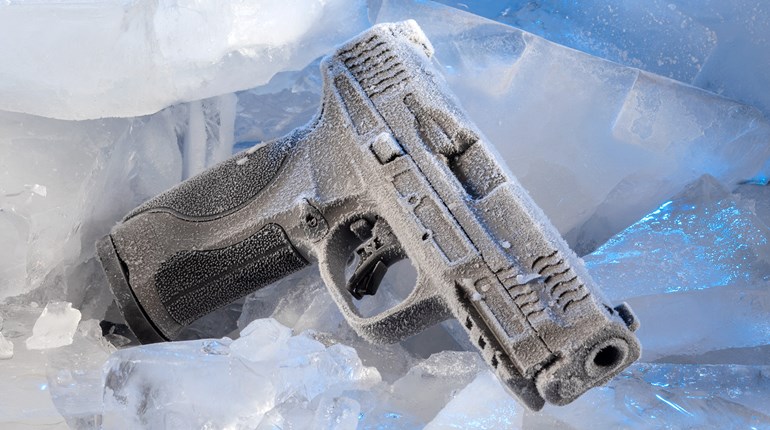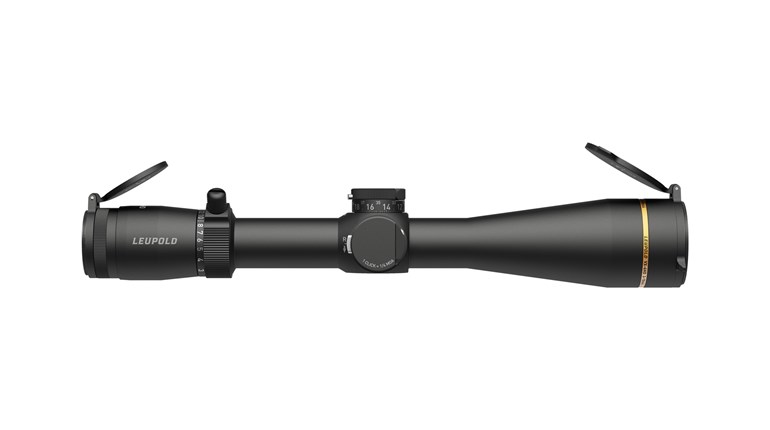
In this fast-paced age of self-loading pistols, it seems I'm not the only one who believes there is a place for the compact, lightweight revolver. Rather than reviewing all the rationale I have presented over the years for this deep-seated opinion, I'll simply state one overwhelmingly simple argument: Ruger just went into production on exactly this type of handgun.
The company calls it the LCR, and the small revolver is an interesting blend of features and materials from the world of handguns, some of which I don't recall seeing on a snub-nosed pocket pistol before. First, the grip frame, which Ruger literature refers to as the "fire control system housing," is made of a modern polymer. More accurately it's a fiberglass-filled polymer, which the press release says helps reduce recoil. I suspect the slightly oversized Hogue rubber grips contribute equally to the reduction in felt recoil, but the end result is that all of the +P ammo tested was quite comfortable to shoot over the course of several cylinders. But I'm getting ahead of myself.
The frame is made of 7000-series aluminum forging (just like some aircraft parts) and has a black, hard coating developed by Ruger. The aluminum provides rigid support for the barrel and cylinder and lighter overall weight for comfort in concealed carry, while the special coating contributes protection from the elements and handling abuse. The cylinder is made of 400-series stainless steel to contain the pressures of .38 Spl. +P loads, features a target-grey finish and has an unusual configuration. The rear third of the cylinder that houses the locking latch cuts is full diameter, while the remainder has long, sweeping flutes like the Colt Model 1862 Police black powder pistol—another 5-shot revolver.
Want more high-tech, super modern material in your snubbie? The LCR has some titanium components in the cylinder's front latching system and what Ruger refers to as an "optimized spring tension" design and "enhanced lockup geometry." All three of these elements should contribute to an extended life digesting +P ammo. The trigger pull on the little revolver is as smooth and consistent as I've seen on an unmodified factory snub nose. Ruger credits this to a "friction-reducing cam fire control system that results in a non-sticking, smooth trigger pull" on the DAO trigger.
I mentioned the Hogue rubber grips that seemed larger than on other short-barrel revolvers I've tried. Although only long enough to allow a grip with the two middle fingers on the shooting hand, the grips seem slightly wider and softer than normal, thus helping reduce felt recoil. In fact, the grips may be a bit too large for someone with very small hands. No problem. The grip frame of the new Ruger is a narrow "stump" (like its big brother, the Super Redhawk) that allows grips of any shape since there is no fixed frontstrap or backstrap. The grips you select may be any shape because they are attached to the frame by one screw located in the bottom of the frame's stump—another clever design feature.
The LCR's sights are almost typical for a snub nose revolver in that they consist of a fixed front ramp and square notch rear. The "almost" is because the ramp front sight is replaceable—held in place by a pin. Also, the rear notch width is cut into the aluminum frame, not the polymer grip frame. The aluminum edges of the rear notch are protected by the polymer frame, so they won't be subject to deformation by any bumps or drops. Both front and rear blade and notch are wide, giving ample visibility and a good sight picture in bright light. In daylight, against a lightly colored target, sight picture was easily acquired and crystal clear. Under dwindling light, or against a dark target, you might consider other options. The large XS Sight Systems' Big Dot system is highly visible and quite popular on guns meant for self-defense. Additionally, Ruger is offering guns with Crimson Trace Lasergrips, or you can simply contact Crimson Trace to order a set after acquiring your LCR. Suggested retail for the standard LCR is $525, whereas the Lasergrips take the gun's price to $792.
I made two trips to Gunsite while working with the new Ruger. The LCR I used was the standard model with factory sights. I ran the little gun through part of the Close Quarters Pistol class. Besides me, a number of shooters had a chance to try the revolver using various loads from Hornady's new 110-grain FTX Critical Defense .38 Spl. +P ammo up through 158-grain lead-bullet handloads. Absolutely no one had the slightest problem with felt recoil, and everyone who had fired revolvers before was impressed with the trigger pull.
Shooting outdoors on the square ranges in daylight, all shooters felt the sights were fine. Head shots at typical self-defense ranges out to 10 or 15 yards were easily made. Beyond 10 yards, individual shooting skills became a major factor. I followed friend and fellow scribe Rich Grassi as he took the LCR through Gunsite's Scrambler, a course where you engage steel targets from pepper popper size up through The Incredible Hulk, and from ranges of 50 to 80 yards. Out of eight targets engaged, only one escaped serious harm from a cylinder of ammo, and most were hit on either the first or second shot. This is not something any shooter could do, but then it's not something just any 2-inch revolver could do either.
I didn't have any belt holsters for a 2-inch revolver, but I did have three pocket holsters since that is the concealed carry technique I prefer for this type of gun. The leather Mitch Rosen form fitted for my Model 442 would not accommodate the Ruger, but the rigid Safariland and collapsible Uncle Mike's both fit. I used the rigid Safariland because being able to re-holster smoothly and efficiently is a part of the Gunsite methodology. Even starting with my shooting hand in the pocket, I wasn't making desired times for putting rounds on target, but I did go through the drills a few times and my targets were pretty good even if my speed wasn't. Finally, the instructors allowed me to start the drills with gun in hand in the low-guard position and, except for the reloads, I was no longer the cog in the wheel who held up the class.
At first glance the LCR may appear a bit odd due to the joining line between the polymer grip housing and the aluminum frame, the different cylinder shape and finish. Not to worry. I'm almost certain you'll warm to the gun's appearance over time. But to speed up the love process, take the LCR out for a shooting session. Once you've reacquainted yourself with the Ruger concept of rugged guns at good prices, I'm certain romance will blossom.





































